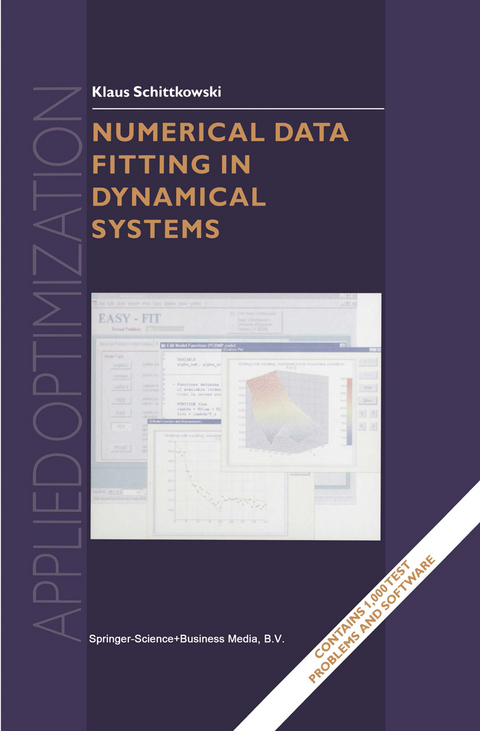
Numerical Data Fitting in Dynamical Systems
Springer-Verlag New York Inc.
978-1-4757-6050-7 (ISBN)
1 Introduction.- 2 Mathematical Foundations.- 3 Data Fitting Models.- 4 Numerical Experiments.- 5 Case Studies.- Appendix A: Software Installation.- 1 Hardware and Software Requirements.- 2 System Setup.- 3 Packing List.- Appendix B: Test Examples.- 1 Explicit Model Functions.- 2 Laplace Transforms.- 3 Steady State Equations.- 4 Ordinary Differential Equations.- 5 Differential Algebraic Equations.- 6 Partial Differential Equations.- 7 Partial Differential Algebraic Equations.- Appendix C: The PCOMP Language.- Appendix D: Generation of Fortran Code.- 1 Model Equations.- 1.1 Input of Explicit Model Functions.- 1.2 Input of Laplace Transformations.- 1.3 Input of Systems of Steady State Equations.- 1.4 Input of Ordinary Differential Equations.- 1.5 Input of Differential Algebraic Equations.- 1.6 Input of Time-Dependent Partial Differential Equations.- 1.7 Input of Partial Differential Algebraic Equations.- 2 Execution of Generated Code.- References.
| Reihe/Serie | Applied Optimization ; 77 |
|---|---|
| Zusatzinfo | 42 Illustrations, black and white; XII, 396 p. 42 illus. |
| Verlagsort | New York, NY |
| Sprache | englisch |
| Maße | 155 x 235 mm |
| Themenwelt | Mathematik / Informatik ► Informatik ► Theorie / Studium |
| Mathematik / Informatik ► Mathematik ► Analysis | |
| Mathematik / Informatik ► Mathematik ► Angewandte Mathematik | |
| Mathematik / Informatik ► Mathematik ► Finanz- / Wirtschaftsmathematik | |
| Mathematik / Informatik ► Mathematik ► Wahrscheinlichkeit / Kombinatorik | |
| ISBN-10 | 1-4757-6050-7 / 1475760507 |
| ISBN-13 | 978-1-4757-6050-7 / 9781475760507 |
| Zustand | Neuware |
| Haben Sie eine Frage zum Produkt? |
aus dem Bereich


